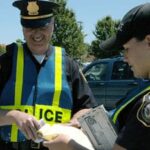At Stillman and Friedland, our dedication goes beyond legal services; we’re committed to promoting road safety in Nashville, particularly during the holiday season. With a focus on staying safe on Nashville roads, we aim to heighten awareness and preparedness, especially as the festive period brings its own set of challenges. While most Tennesseans recognize the importance of safe driving, the increased risk of encountering impaired drivers during this time calls for heightened vigilance and proactive measures.
Before You Drive: The Importance of Uninsured Motorist Insurance in Nashville
- Reckless drivers, who often include impaired individuals, are more likely to neglect financial responsibilities, including carrying insurance.
- In Nashville, where the incidence of uninsured motorists is concerning, having uninsured motorist insurance (UMI) becomes essential.
- Protect yourself financially from drivers who are both impaired and uninsured. UMI is your safeguard.
Defensive Driving: Essential in Nashville’s Busy Streets
- Always buckle up. Seat belts and correct child safety restraints are life-savers.
- For local advice on child restraints, Nashville residents can consult with Ollie Otter.
- Avoid driving during peak hours of impaired driving. Consider overnight stays to bypass nighttime driving risks.
- Prepare your vehicle for Nashville’s winter conditions to ensure optimal performance.
Maintaining Safe Stopping Distances on Nashville Roads
- The two-second rule is standard for good weather and daylight conditions. Spot a reference point on the road:
When the vehicle ahead passes it, count “one-one-thousand, two-one-thousand.” - If you pass the same point in under two seconds, increase your following distance.
- In adverse weather or poor visibility, typical in Nashville winters, extend this to a six-second rule for added safety.
Heightened Caution at Intersections
- Intersections are hotspots for accidents. Always be prepared for drivers who might disregard traffic signals.
- During Nashville’s holiday season, be extra vigilant for erratic driving behaviors, especially at night.
Be a Responsible Nashvillian: Prevent Impaired Driving
In our commitment to staying safe on Nashville roads, a key aspect involves taking proactive steps to prevent impaired driving. As a responsible member of the Nashville community, you can make a significant difference:
- Act as a Designated Driver: Volunteering to be the designated driver for your friends or family is a noble and vital role. By ensuring that everyone gets home safely, you are directly contributing to the safety of Nashville’s roads. This act of responsibility not only saves lives but also sets a positive example in our community.
- Encourage Safe Ride Options: If acting as a designated driver isn’t feasible, encourage the use of safe ride options such as taxis, rideshare services, or public transportation. This simple suggestion can prevent potential accidents and keep our roads safer.
- Educate and Advocate: Share information about the risks of impaired driving with your social circle. The more people understand the dangers, the more likely they are to make safer choices. Use your influence to advocate for responsible driving behaviors.
- Community Involvement: Participate in or support local initiatives and campaigns aimed at reducing impaired driving. Community efforts play a crucial role in raising awareness and promoting road safety.
- Remember the Importance of Prevention: The best approach to road safety is prevention. Staying alert, making wise choices, and being prepared to intervene when necessary can significantly reduce the likelihood of accidents. Remember, prevention is always better than dealing with the aftermath of an accident.
By embracing these practices, every Nashvillian can contribute to staying safe on Nashville roads and ensure a happier, safer holiday season for all.
Conclusion
The holiday season should be a time of joy and celebration, not of accidents and injuries. At Stillman and Friedland, while we are here to assist those affected by road accidents, our bigger mission is to promote preventive measures and safe driving in Nashville. Let’s work together to make our roads safer for everyone this holiday season.
Remember, we’re here for you, Nashville. If you need guidance or assistance, chat with us, fill out a form, or contact Stillman & Friedland at 615-244-2111.
Because we care…







